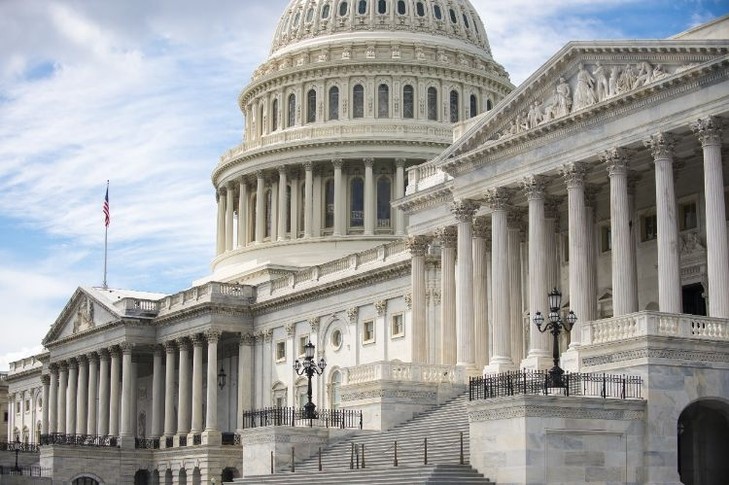
Our mission is to help you Preserve Your Assets and Protect Your Lifestyle. Our newsletter aims to educate you on the economic environment and provide life perspectives and financial planning ideas to help you!
Quarterly Market Review

iM Global Partner’s Market Slides
🔷- The second quarter began with the tariff announcement that sent equity markets sharply lower. The sell-off continued until a 90-day pause on all tariffs was announced. The S&P 500 rallied and by quarter-end, had reached a new all-time high.
🔷- We expect the U.S. economy to slow in the near term but continue to believe it can avoid a meaningful downturn and ultimately regain momentum over time. Inflation, from a structural perspective, remains under control. The only area of concern is services, especially shelter. The labor market is showing signs of slowing and is unlikely to improve significantly, given the rise in deportations.
🔷- Portfolios benefited from global diversification in a very volatile first half of the year. International equities outperformed U.S. by wide margins in part due to a falling dollar. Fixed income also generated solid returns and, importantly, provided stability when risk assets were down.
Morningstar
🔷- US stocks performed poorly in 2025 through April 15. Small caps experienced the steepest declines, while value stocks held up better than growth stocks. US stocks also significantly underperformed international stocks, reversing recent trends, as developed markets posted modest gains. US fixed income saw mixed results, with higher-quality bonds outperforming high yield. Commodities surged, driven by gold prices hitting a new high.
🔷- The surge in tariffs does have a major impact on our forecast and has increased risk on both the recessionary and inflation front. We expect GDP growth to slow over the next two years, averaging about 1.5% lower in 2025 and 2026 than in the prior two years. Slowdown was in effect with an overstretched consumer, with a household savings rate that’s below the pre-pandemic level.
🔷- A key stated goal of US tariffs is to reduce the US trade deficit (the main component of the current account deficit). The US made progress in reducing the current account deficit in the 2010s – aided by falling surpluses to China, oil-exporting countries, and other emerging-markets economies – but it has swelled since 2020 owing to solid domestic demand and a strong dollar. Tariffs are unlikely to correct global account imbalances, which are driven by countries’ savings and investment choices.
Schwab Market Perspective
🔷- As we approach the midpoint of 2025, the U.S. economy continues to confront a complex interplay of policy decisions around tariffs and immigration, labor market dynamics, and fiscal pressures. The tariff measures have contributed to stagflation, a deceleration in economic growth, and an expected acceleration in inflation.
🔷- We continue to believe the labor market holds the key to economic and Federal Reserve policy outlooks. The present environment can be characterized as one in which companies have cut back on hiring plans, but they aren’t yet teeing up firings to any significant degree. The health of the labor market is one of the most important supports for consumption, which is a huge component of GDP.
🔷- The S&P 500’s rebound from the April 8th lows has been almost as jarring as its decline to those lows. Now that valuations have also bounced back and are close to their cycle highs, there is bit less juice to squeeze from the multiple-expansion fruit; more has to come from earnings growth. Unfortunately, it’s becoming increasingly difficult to see the path forward for earnings – unsurprisingly because of tariffs.
GFP Perspective:
🔷- Changes in trade and capital flows have downstream effects on the entire economy. Currently, they are causing global investors to question the soundness of the dollar and dollar-based assets. At the same time, US fiscal policy is causing long-duration bond investors to price in higher default risks. Theoretically, a cheaper dollar should encourage investors to buy US goods and financial assets…it isn’t happening this time.
🔷- We concur with Schwab that the tariffs hikes are typically stagflationary shocks – they simultaneously increase the probability of economic slowdown while putting upward pressure on prices. We continue to expect interest rates to be higher for longer. The Fed will likely take a conservative approach to easing policy to safeguard against a softening economy and a reigniting of inflation.
🔷- Stricter bank capital and liquidity rules will likely continue to push many lending activities to the private credit market, especially asset-based finance. This opens opportunities for investors to act as senior lenders in areas once dominated by regional banks. We continue to see attractive opportunities in high-quality areas, where starting conditions and valuations appear favorable relative to corporate credit.
This is Life

Living and Investing In Today’s World- By: Patrick Guinet , CIMA®
Life and investing share common realities — both are marked by inevitable ups and downs, periods of growth and challenge, and the constant presence of change. Success in either requires the ability to adapt, reassess, and make decisions that align with evolving circumstances. Whether managing a career, relationships, or a financial plan, the need to adjust our course based on new information and changing conditions is constant.
A recent example is our decision to begin to remove Bluerock Total Income Real Estate from client portfolios. While the investment previously served a specific purpose, changing market conditions, liquidity considerations, and our forward-looking analysis led us to conclude that reallocating those assets better aligns with our clients’ long-term objectives. Remaining disciplined and proactive in our investment approach is essential to managing risk and optimizing returns — much like the thoughtful adjustments we make in life to stay on track toward personal goals.
We approach these decisions with a deep sense of responsibility. As fiduciaries, we are entrusted with both the design of our clients’ financial plans and the stewardship of their hard-earned assets. That trust is not taken lightly. Every decision we make is grounded in the goal of safeguarding client interests while positioning portfolios to meet evolving market conditions.
In many ways, life and investing are alike — both require patience, flexibility, and the discipline to make strategic adjustments when circumstances shift. Success rarely comes from standing still; it comes from being engaged, informed, and willing to evolve. We value the trust our clients place in us and remain committed to guiding them through life’s financial journey with the same adaptability and focus it takes to navigate life itself.
Education to Empower You

Big Tax Changes Ahead: What You Need to Know
With the passage of the new federal tax bill — dubbed the “One Big, Beautiful Bill” — there are some significant tax and financial changes on the way.
This legislation makes permanent or expands many of the provisions introduced initially under the 2017 Tax Cuts and Jobs Act, which were previously set to expire after 2025.
Here are the highlights:
Changes to Income Tax, Deductions, and Credits
Lower Income Tax Rates Extended
The individual income tax brackets introduced by the TCJA have now been made permanent. That includes the 37% top marginal rate (instead of returning to 39.6%) and lower rates across most tax brackets. The bracket thresholds have also been adjusted upward for inflation, which may help reduce your taxable income if your earnings have remained steady.
Higher Standard Deduction
The near-doubling of the standard deduction continues instead of ending after 2025. The standard deduction ($15,750 for single filers and $31,500 for married couples filing jointly in 2025) will be adjusted each year for inflation. This may mean fewer taxpayers will need to itemize deductions at all.
Expanded Child Tax Credit
The CTC increases to a maximum of $2,200 per child with a refundable amount of $1,700 in 2025, indexed for inflation in subsequent years. Starting in 2026, eligibility for the full credit amount depends on several factors: low-income families must owe at least $1,700 in federal income taxes to receive the full benefit, and the credit phases out for individuals earning over $200,000 and married couples filing jointly earning over $400,000. A separate $500 nonrefundable credit remains for other dependents who do not qualify for the full amount.
New Car Loan Interest Deduction
Starting in 2025, taxpayers may deduct up to $10,000 in interest on new auto loans, though the benefit phases out for individuals earning over $100,000 ($200,000 for joint filers). The deduction applies only to vehicles with final assembly in the U.S. and is available through 2028. The deduction decreases by $200 for every $1,000 of income above the threshold. For example, a single filer earning $120,000 could deduct $6,000.
Temporary Tax Break on Tip Income
From 2025 through 2028, eligible workers can deduct up to $25,000 per year in reported tip income from their federal taxable income. The break applies to employees who receive tips subject to payroll tax withholding and earn less than $150,000 ($300,000 for joint filers). A list of qualifying tip-based occupations will be published by the Treasury Department this fall.
State and Local Tax Deduction Cap Increased
The cap on SALT deductions was not eliminated, but it is getting a temporary boost. Beginning in 2025, the cap will rise from $10,000 to $40,000, offering potential relief to households in higher-tax states.
However, the expanded deduction begins to phase out for taxpayers with incomes above $500,000. The exact benefit will vary based on filing status and household income.
Provisions for Wealth Transfer, Investments, and Retirees
Temporary “Senior Bonus” Deduction Introduced
Americans age 65 and older may qualify for a temporary $6,000 “bonus” tax deduction starting in 2025. The full amount is available to individuals with incomes of up to $75,000 ($150,000 for joint filers) and phases out for those with higher incomes.
Estate and Gift Tax Exemptions Increased Permanently
The new tax law permanently raises the estate, gift, and generation-skipping transfer tax exemption from $10 million to $15 million per person (adjusted for inflation). This avoids the planned 2026 rollback and allows individuals to pass on more wealth tax-free.
Capital Gains Brackets Adjusted for Inflation
Capital gains tax brackets have been adjusted for inflation, allowing more investors to stay in the 0% or 15% tax range. For 2025, individuals can have up to $48,350 in taxable income, and married couples filing jointly can have up to $96,700, and still qualify for the 0% rate.
This change offers added flexibility for individuals seeking to sell appreciated assets without incurring higher tax liabilities.
Other Noteworthy Changes
The lifetime exclusion is now $15 million — permanently.
Starting in 2026, the basic exclusion amount for federal estate and gift taxes increases to $15 million per person, indexed for inflation from 2025 onward. That’s up from a projected $7.2 million if the previous law had sunsetted as scheduled.
With each spouse’s exclusion now set at $15 million, couples can collectively transfer up to $30 million without incurring estate or gift taxes.
Alternative Minimum Tax Relief Made Permanent
The new law permanently extends the higher AMT exemption levels set by the 2017 tax cuts, helping more households avoid the AMT. The exemptions will continue to be adjusted for inflation, but the phaseout rate for higher earners increases from 25% to 50%, meaning the benefit tapers off more quickly for high-income taxpayers.
Major Medicaid Changes
OBBBA also includes major changes to Medicaid, including:
- Cuts of roughly $1 trillion in federal Medicaid funding over the next decade.
- Work or volunteer requirements (80 hours/month) and frequent eligibility checks for U.S. citizen recipients.
- Tighter restrictions on who qualifies for coverage and what services are included.
New “Trump Accounts” for Child Savings
In the new bill, children born in the United States between 2025 and 2028 who have a Social Security number will receive a onetime $1,000 federal deposit into a new tax-advantaged savings account, nicknamed a “Trump account.” These accounts are opened automatically once a parent files taxes and meets eligibility requirements.
Parents can contribute up to $5,000 annually, and employers may contribute up to $2,500 without it being considered taxable income. Funds will be invested in a diversified U.S. stock index fund, which will grow tax-deferred. Qualified withdrawals will be taxed as long-term capital gains.
EV and Clean Energy Tax Credits Phased Out
Several popular clean energy tax credits are set to end under the new legislation. The $7,500 credit for new electric vehicle purchases and the $4,000 credit for used EVs will expire after September 30, 2025. Tax breaks for home energy-efficiency upgrades — such as solar panels, heat pumps, and efficient windows — will also be eliminated after December 31, 2025.
With all these changes, now may be a good time to review how the new law might impact your tax situation, retirement contributions, or investment planning. If you’d like to discuss this further, we’d be happy to connect.


